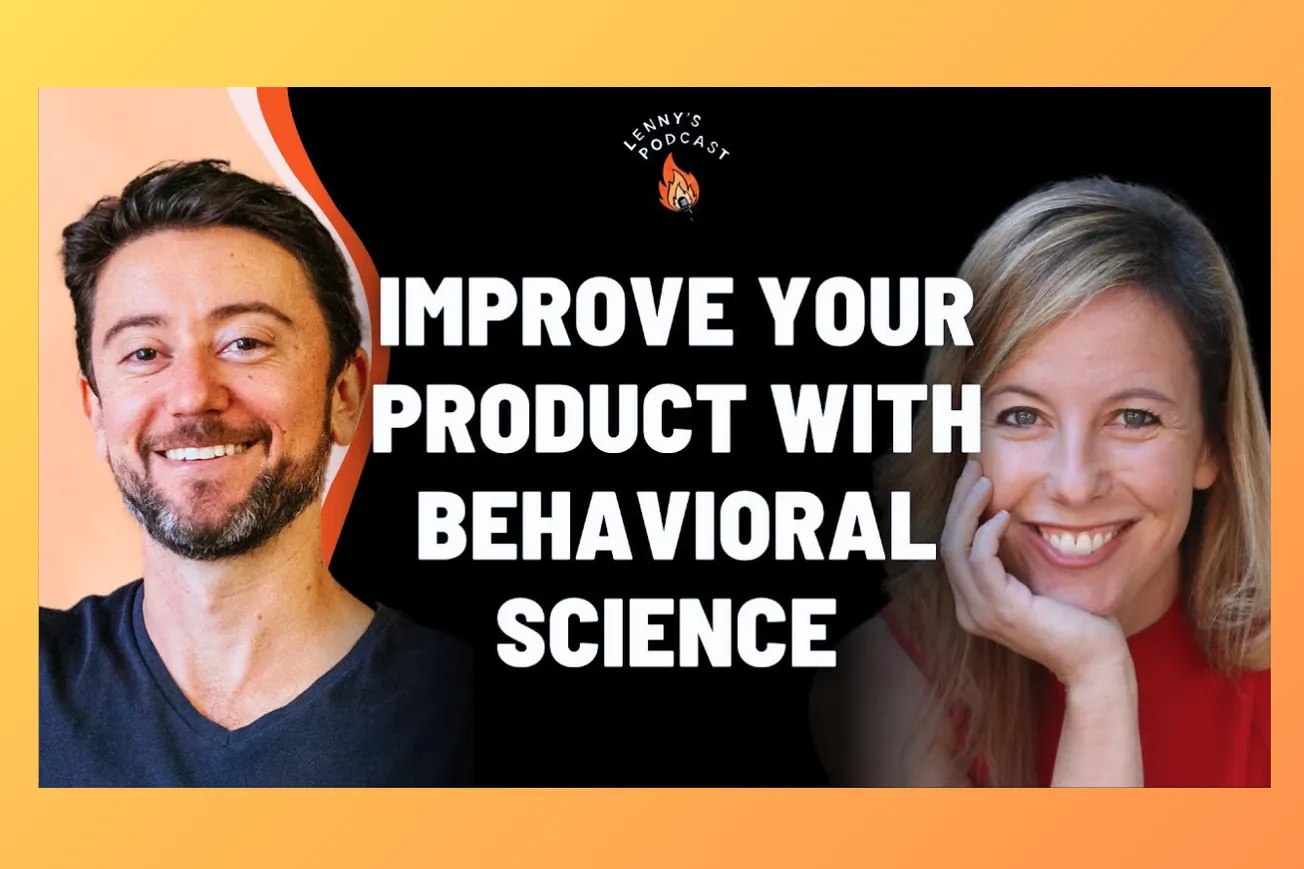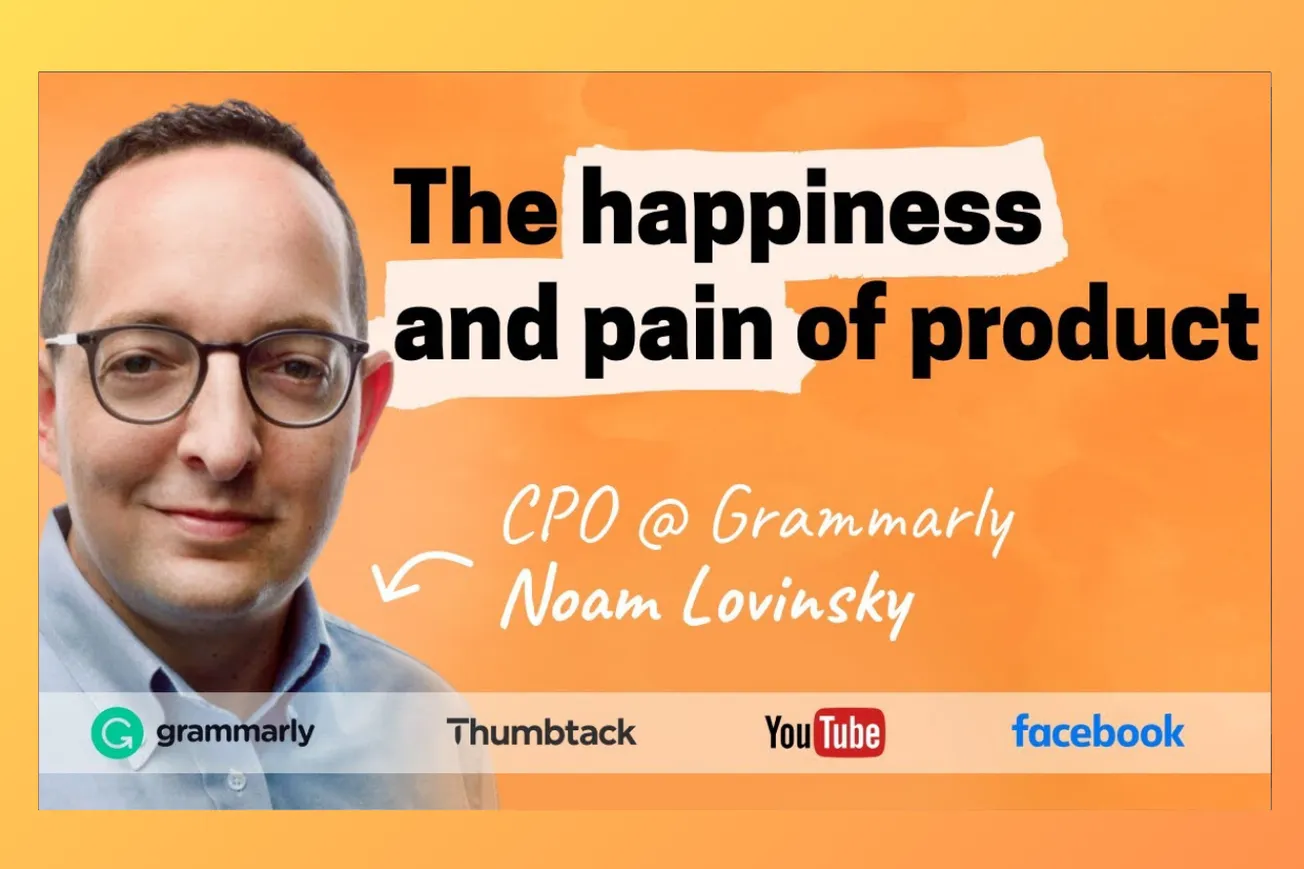Table of Contents
Behavioral science helps product teams understand user psychology to design better experiences, with proven tactics increasing conversion by 133% and reducing unwanted behaviors by 24%.
Learn how behavioral design principles from Google, TikTok, and One Medical create measurable product improvements through psychology-driven optimization.
Key Takeaways
- Traditional economics ignores psychology, but behavioral science combines both fields to predict and influence user decision-making patterns
- The 3B Framework (Behavior, Barriers, Benefits) provides systematic approach to behavior change through specific actions, friction reduction, and immediate rewards
- Adding strategic friction can increase conversion by 133% when questions engage users with product benefits during signup flows
- Present bias drives all decisions, requiring immediate benefits rather than future value promises to motivate user actions today
- Budgeting features consistently fail despite user requests because behavioral diagnosis reveals implementation complexity versus actual usage patterns
- Status quo bias represents the strongest force keeping users doing yesterday's actions, requiring environmental redesign to enable change
- Cognitive barriers like uncertainty aversion and information aversion often outweigh logistical friction in preventing desired user behaviors
Timeline Overview
- 00:00–05:45 — What is Irrational Labs, and what do they do? — Introduction to behavioral science consulting, working with Google, Airbnb, PayPal, and examples of driving behavior change across industries
- 05:45–06:50 — What are behavioral economics and behavioral design? — Combining psychology and economics to understand predictable irrationality, emotions in decision-making, and real-world problem applications
- 06:50–10:46 — The fintech budgeting experiment — Case study showing why requested features fail: 10,000-person budgeting test yielded zero behavior change despite user demand
- 10:46–11:35 — What drives behavior change? — Environmental redesign over goal-setting, rules of thumb versus complex decision-making, and systematic behavior modification approaches
- 11:35–13:51 — Why increasing friction can sometimes increase conversion — Strategic question-asking during signup flows, Trunk Club's 133% conversion increase, and benefit engagement techniques
- 13:51–16:09 — How to ask the right questions for user engagement — Multiple choice versus open text fields, Title Care's 53% purchase rate improvement, and motivational question design
- 16:09–18:10 — How Kristen got her start in behavioral economics — Meeting Dan Ariely in 2008, transitioning from Intuit product management, and discovering behavioral science applications for product teams
- 18:10–20:37 — The 3B model of behavior change — Framework breakdown: specific Behavior definition, Barriers reduction (logistical and cognitive), and immediate Benefits for user motivation
- 20:37–22:02 — Cognitive barriers — Uncertainty aversion, status quo effect, information aversion explanations with real-world examples from Lyft and healthcare decision-making
- 22:02–24:20 — The importance of building products with immediate benefits to the user — Present bias drives all decisions, completion bias motivation, social desirability effects, and Asana's task-logging psychology
- 24:20–26:45 — How exploitation can occur — Lending Club case study, incentive structure dangers, predatory lending risks, and ethical considerations in behavioral design implementation
- 26:45–29:15 — How to set customer-friendly incentives — Measuring behavior over conversion, longer-term incentive timeframes, customer outcome focus, and sustainable business practice alignment
- 29:15–31:58 — How Kristen reduced the sharing of misinformation on TikTok — 24% reduction through content labels and confirmation popups, literature review process, and behavioral intervention methodology
- 31:58–35:36 — Tips for researching and solving problems — Google Scholar search strategies, keyword identification techniques, hypothesis development, and quantitative research methodology for behavioral interventions
- 35:36–38:31 — The One Medical case study — 20% appointment booking increase through provider recommendations, choice reduction, virtual appointment suggestions during onboarding optimization
- 38:31–41:46 — Rules of thumb for improving flow — Benefit demonstration, friction reduction, abstract-to-concrete conversion, dropout recovery strategies, and Wealthfront's continuation optimization
- 41:46–47:00 — What is right-for-wrong? — Vaccine incentives, voting pizza, Clubhouse status, Peloton shout-outs, and motivating correct behavior through unrelated immediate rewards
- 47:00–49:33 — How to get started using behavioral design — Team workshops, behavioral diagnosis mapping, 200-300 screenshot analysis, psychology overlay techniques for product optimization
- 49:33–52:01 — The Behavioral Design Bootcamp — Eight-week self-paced course, 16 modules, homework assignments, Slack community, and team implementation strategies
- 52:01–END — Lightning round! — Book recommendations, podcast suggestions, favorite shows, interview questions, and industry thought leader recognition
The Psychology Revolution in Product Design
- Traditional economics assumes rational decision-making without emotion, but "obviously that's just not true it ignores the whole field of psychology"
- Behavioral economics combines psychology and economics to acknowledge emotional decision-making, present bias, and social norm following in predictable patterns
- People consistently overweight present experiences versus future benefits, making immediate value delivery critical for product adoption and retention
- Understanding user psychology enables systematic behavior change rather than relying on intuition or incomplete user research for product decisions
- Companies like Google, Airbnb, PayPal, Microsoft, and TikTok use behavioral science to achieve measurable improvements in user engagement metrics
- Behavioral design applies psychological insights to real-world problems, creating evidence-based solutions that account for human irrationality and decision shortcuts
The 3B Framework for Systematic Behavior Change
- Behavior definition requires "uncomfortably specific" actions that teams can measure, avoiding vague goals like "increase engagement" or "user activation"
- Example behavior specification: "within seven days of somebody starting the app they do two 10 minute workouts with two different instructors"
- Barriers divide into logistical friction (credit card entry, form fields) and cognitive friction (uncertainty aversion, optimism bias, information aversion, status quo effect)
- Status quo bias represents the strongest psychological force, where people default to yesterday's actions and resist environmental changes requiring new behaviors
- Uncertainty aversion creates decision paralysis when users lack clarity about outcomes, timing, or process steps, often leading to alternative option searches
- Benefits must provide immediate rather than future value, since present bias makes people prioritize today's rewards over long-term outcomes
- "If you don't Define that behavior you're going to change you can't actually Define the psychologies that affect someone's decision making"
Strategic Friction and Conversion Optimization
- Adding friction can increase conversion by 133% when questions engage users with product benefits during signup flows rather than reducing obstacles
- Apartment List asks apartment preference questions during signup, making users think about studio versus bedroom options, patios, basements, and views
- Questions insert ideas into user minds: "when you ask a question you can insert an idea into someone's head you can get them thinking about something different"
- Multiple choice questions work better than open text fields, which create cognitive burden and typically reduce conversion rates significantly
- Title Care increased purchase rates from 37% to 53% by adding medical behavior and technology frequency quiz questions before product presentation
- Strategic friction works by increasing motivation to overcome subsequent barriers through benefit engagement rather than simply removing all obstacles
- Quiz completion creates mental investment in product outcomes, making users more likely to complete purchase decisions after initial engagement
Real-World Case Studies and Implementation
- TikTok reduced misinformation sharing by 24% using strategic friction: content labels plus "are you sure?" confirmation popups to slow sharing decisions
- One Medical increased appointment bookings by 20% during onboarding through provider recommendations, limited appointment choices, and virtual visit suggestions
- Literature reviews precede behavioral interventions, using Google Scholar to identify existing research and meta-analyses before developing new solutions
- Behavioral diagnosis involves mapping 200-300 screenshots of user flows with psychological overlays identifying barriers at each decision point
- Credit Karma increased recurring deposit setup by 18% through behavioral science optimization of their savings account enrollment process
- Multiple condition testing ensures relative comparison rather than absolute user preference measurement, which provides unreliable decision-making data
Common Psychological Barriers in Product Design
- Uncertainty aversion manifests when users don't know timing, outcomes, or processes, leading to option searching or decision avoidance entirely
- Information aversion prevents users from accessing potentially negative data, particularly relevant in healthcare and financial products requiring uncomfortable truth confrontation
- Social desirability bias motivates actions when other users can observe completion, creating accountability and status motivation for continued engagement
- Completion bias drives task finishing behavior, explaining the effectiveness of progress indicators, checklists, and visible advancement through product flows
- Optimism bias causes users to overestimate their ability to complete complex tasks, leading to abandoned flows when reality contradicts initial expectations
- Present bias prioritizes immediate rewards over future benefits, requiring instant gratification elements to maintain user engagement through difficult processes
Ethical Implementation and Incentive Design
- Dark patterns emerge when teams measure conversion metrics without considering long-term customer outcomes and sustainable business practices
- Incentive structures determine ethical application: measuring behavior rather than just conversion creates more customer-friendly product development approaches
- Longer incentive timeframes (annual versus quarterly) encourage sustainable customer value creation rather than short-term metric manipulation tactics
- "Right for wrong" examples include vaccination rewards (donuts, marijuana, lottery tickets) that motivate correct behavior through unrelated immediate benefits
- Team workshops should focus on customer outcome measurement alongside business metrics to maintain ethical behavioral influence within product experiences
- The lending industry provides cautionary examples where behavioral science can enable predatory practices when aligned with harmful business incentive structures
Team Implementation and Practical Application
- Behavioral diagnosis workshops help teams map complete user journeys with psychological barrier identification at each decision point throughout flows
- Literature review methodology involves Google Scholar searches using domain-specific keywords to find meta-analyses summarizing existing behavioral research
- Workshop facilitation requires uncomfortable specificity in behavior definition, with team disagreement indicating insufficient clarity for measurable optimization efforts
- Screenshot analysis involves 200-300 slides documenting every user interface step with psychological overlay identifying specific barriers preventing progression
- Office hours and Slack communities provide ongoing support for teams implementing behavioral design principles within existing product development processes
- Eight-week bootcamp courses offer structured learning with homework assignments, feedback loops, and practical application to current product challenges
Common Questions
Q: What's the difference between behavioral design and traditional UX design?
A: Behavioral design uses psychology research to predict user actions, while UX focuses on usability and interface optimization.
Q: How do you avoid using behavioral science for manipulation?
A: Focus on customer outcomes, measure behaviors rather than just conversions, and use longer-term incentive structures.
Q: What's the most common mistake teams make with behavioral interventions?
A: Defining vague behaviors instead of uncomfortably specific actions that can be measured and optimized systematically.
Q: How long does behavioral diagnosis typically take for product teams?
A: Complete analysis requires mapping 200-300 screenshots with psychological overlays, typically taking several weeks of detailed documentation.
Q: Which psychological barriers most commonly prevent product adoption?
A: Status quo bias and present bias represent the strongest forces, requiring environmental redesign and immediate benefits.
Conclusion
Behavioral science transforms product development by replacing intuition with psychology-backed optimization strategies that measurably improve user outcomes. Teams implementing systematic behavior change frameworks consistently achieve double-digit conversion improvements while maintaining ethical customer relationships.
Start applying behavioral design principles to unlock your product's conversion potential.








